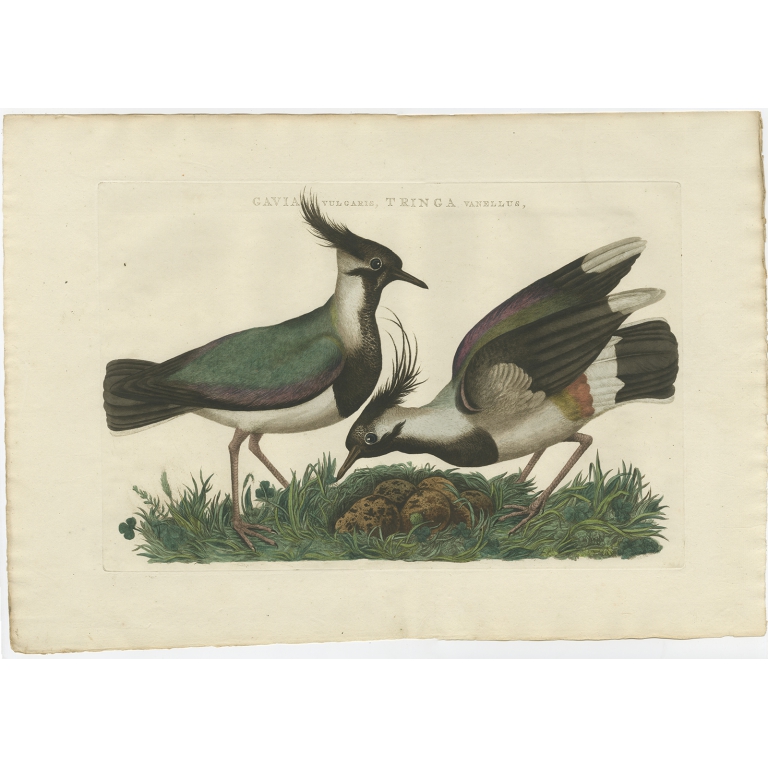FREE
WORLDWIDE
SHIPPING
No products
BG-12630
Antique Bird Print of the Northern Lapwing by Sepp & Nozeman (1770)
- Condition: Very good, general age-related toning. Blank verso, original Dutch text page included. Please study image carefully.
- Date: 1770
- Overall size: 54.5 x 38 cm.
- Image size: 42 x 28 cm.
Worldwide
shipping
Description: Antique bird print titled 'Gavia vulgaris, Tringa vanellus'. The northern lapwing (Vanellus vanellus), also known as the peewit or pewit, tuit or tew-it, green plover, or (in Britain and Ireland) just lapwing, is a bird in the lapwing family. It is common through temperate Eurasia. It is highly migratory over most of its extensive range, wintering further south as far as north Africa, northern India, Pakistan, and parts of China. It migrates mainly by day, often in large flocks. Lowland breeders in westernmost areas of Europe are resident. It occasionally is a vagrant to North America, especially after storms, as in the Canadian sightings after storms in December 1927 and in January 1966. It is a wader that breeds on cultivated land and other short vegetation habitats. The nest and young are defended noisily and aggressively against all intruders, up to and including horses and cattle. This print originates from 'Nederlandsche Vogelen; volgens hunne huisdouding, aert, en eigenschappen beschreeven", Amsterdam, 1770-1829 by C. Nozeman, M. Houttuyn and J.C. Sepp. This is the most important and first study in the Netherlands of ornithology at that time. The birds are depicted as they are in life, said to be depicted close to life sized and in their environment.
Artists and Engravers: This monumental work is associated with Christiaan Andreas Sepp, Jan Christiaan Sepp, Jan Sepp, Cornelis Nozeman, Martinus Houttuyn and Coenraad Jacob Temminck.



